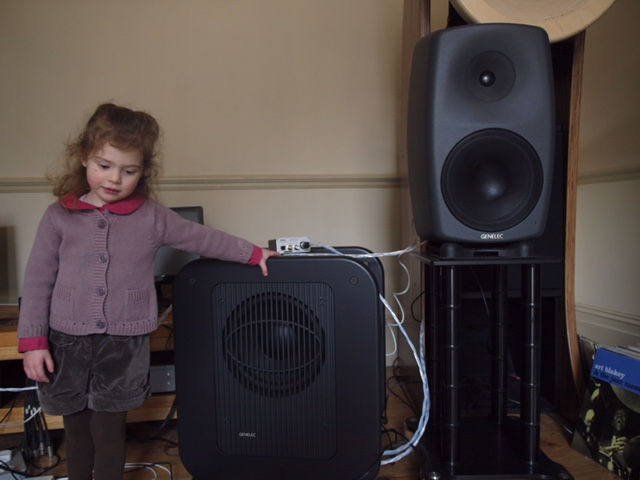Acoustic measurement with REW.
- Keith Cooper

- Feb 23, 2024
- 4 min read
In the last thrill packed instalment I described how you could use an online room mode calculator such as Amroc to discover your rooms main axial modes, the frequencies which are most likely to produce 'boomy' bass, which of course has absolutely nothing to do with the design of your loudspeakers and everything to do with the physical dimensions of your room.
We recently decided to re-arrange one of our demonstration rooms so I am going to use REW ( Room EQ Wizard ) to acoustically measure the room and to determine the best or least worse placement options for both speakers and listening position.
Amroc tells me the axial, tangential and oblique modes, it has also calculated the room's volume, and even its Schroeder frequency. The area of the FR where sound changes from reverberant to reflective.
I am now considering where I can position the speakers and myself so that we won't be in the absolute middle of the room in either length, width or height ( not much you can do about height). First width mode is at approx 28Hz, length 40.1Hz and height 57.17, there is also the 2nd width mode very close at 57.36Hz.
I am not going to sit in any of the corners of the room, when the velocity of air is zero pressure builds so there is generally a build up of bass at the room's boundaries.
You can check whether Amroc's calculations with the signal generator in REW.
Opening REW I am going to the 'room simulation' tab.
I have entered the room's physical dimensions and positioned the speakers and listening positions, just like most domestic shared rooms positioning options are limited, because there are doors, windows and fireplaces to accommodate.
Below is a screen shot of the 'room sim' graphic, realistically the speakers have to be positioned close to where they are now, the sub/subs of course can be placed elsewhere and the listening position can be moved closer of further back, remembering that an equilateral triangle, speakers and listening position the same distances apart is a good
place to start. Speakers should be positioned within 60cm of the front wall, pulling the speakers further into the room simply introduces more cancellations into the response.

As you virtually drag components around the room you will see the FR change, subwoofers definitely produce more output placed into the very corners of the room.
My 'best' listening distance ( the one with the flattest, less wiggly response ) appears to be around 2.5-2.75m from the front wall, now I am going to set up my microphone and acoustically measure.
The equipment you will need:-
A microphone, doesn't need to be expensive, a Mini DSP 'U-MIK' which are around £120.
Just plug that into your PC's USB port and then connect your PC to your system, I just plug into my dsc/streamer again through USB.
REW is practically plug and play, firstly you must ensure that REW's test tones are going to play through the system, on a Mac that means opening 'Audio Midi' the piano keyboard icon which can be found in, applications/ utilities, Windows go to 'sound'.
Set the UMIK as your 'default input' sample rate 48kHz and your dac to 'default output' sample rate again 48kHz.
In REW choose the 'generic' equaliser, REW (header) 'settings' then 'equaliser page from 'preferences'.
Start with the volume at your normal listening level, there is a 'measure' button press it and the lower screenshot appears showing the 'make a measurement' pane.
I always choose to measure the left speaker first, so I select 'L' as the default output, there is a 'Check Levels' button at the bottom, when you press this you should hear a tone from the default speaker, whichever you have chosen left or right.
The level check will flash BLUE if the level is too low, so increase moderately until you get the GREEN 'level OK' and then you can hit 'Start'.


Upper screenshot, press REW from the header bar, open 'settings' from the drop down and then 'equaliser'.
When you have pressed 'Measure' the screenshot above appears, almost nothing to adjust, choose which speaker as default, L or R or L+R, I always start with left, then press measure again select 'R' hit measure again then L+R.
'Check Levels 'is at the the bottom and 'Start' next to it.
It will state that the microphone isn't calibrated but just continue anyway.
When you press 'Start' you should hear the frequency sweep, when it has finished and the FR displayed go back to 'Measure' this time selecting 'R' loudspeaker and so on.
Hopefully you will have produced three measurements, left, right and left and right together.
In their raw unsmoothed state I find the plots are just too difficult to look at.

But if you hit 'actions', ( underneath the spanner right hand top, a pane will open and you can select smoothing, the degree of smoothing from the drop down, I usually use 1/12 and then 'apply smoothing' and you get this which I find much easier to read.

You have your first measurement, along the X axis, frequency, Y has the sound pressure level.
Usually and for conformity, measurements are taken from 20Hz to 20kHz, you can adjust in 'Limits', and the Y axis is usually set for a 60dB scale, in my case 55dB to 110dB.
If everyone use the same scale then it just makes interpretation easier.
Next time now we have them what do we do with them!
Keith



Comments